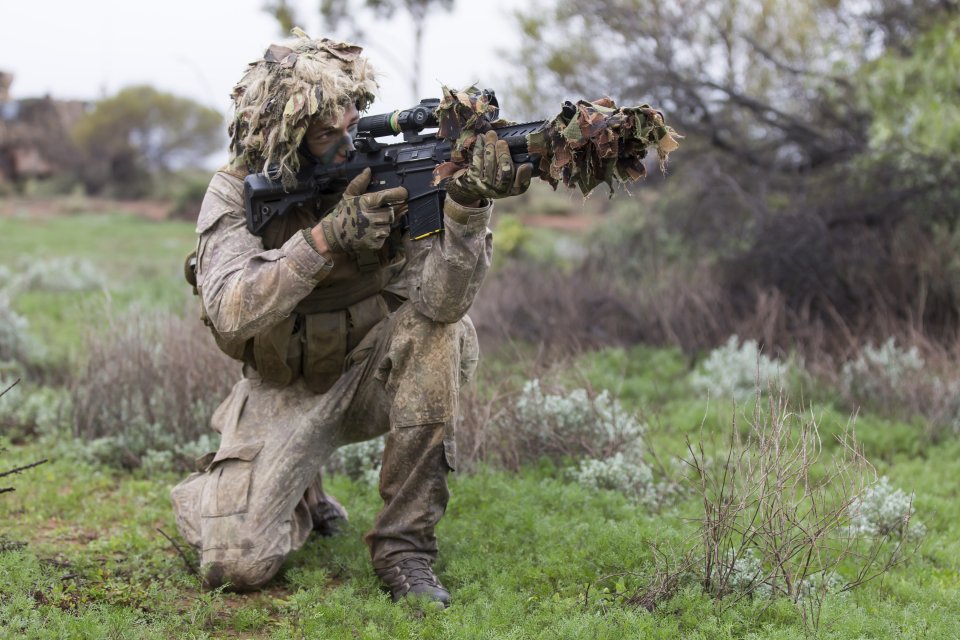
Innovation has always been a factor of military thinking to one degree or another, however in recent years it has been gathering momentum again. With increasingly complex operational environments, commanders are becoming more aware of the importance of innovative thinking. Military thinkers are looking to the commercial sector to see what principles and practices could be utilised by military commanders, but are they all missing something important?
The current focus of military innovation is heavily macro-focused, everyone wants to find the game-changing way of fighting battles or the new strategy to win wars. We look at groundbreaking equipment and new ways of working with our strategic partners. All of this is vitally important to our profession of arms. However, with our focus on the command led macro-side of innovation we are missing a key aspect of innovation – the innovations that we adopt every day.
The way to address this is to start thinking about processes. Our military organisations are a collection of systems of processes. As an example at the individual level, the basic level trained solider must complete around 34 processes, from fire and manoeuvre, to how to clean their weapon, to filling out leave applications. Go up to the Platoon level and the number of processes is well over 100, start going Company size and above and it is nearly impossible to identify all the processes involved. The question then follows “are all our processes as efficient as they could be?”
If they are not then the collective inefficiencies build up to ‘organisational lag’. We have all seen organisational lag at some point in our careers, whether it be receiving incorrect stores, applications not being approved in time, simple tasks taking unreasonably long times to complete or change projects simply vanishing in the bureaucracy. All of these events slow down our processes and create a huge cumulative opportunity cost for our organisations. This lag in our processes inhibits both the delivery and the effectiveness of our command led macro-innovation ideas.
So how do we address this organisation lag? The task can seem daunting, if there are so many processes within our organisations how are we to start identifying the inefficient ones? The private sector has provided a solution to this problem, crowdsourcing. The people most suited to addressing these micro-innovation opportunities are the same people who have to conduct these specific processes every day.
This means that we must look to a bottom-up approach to solving the problem of organisational lag, this runs counter to the traditional top-down hierarchical military approach. Try as we might to encourage bottom-up innovation, it often reverts to top-down due to resource allocation. All-ranks need to be provided an avenue for voicing innovation ideas, this avenue should be outside of their chain of command to avoid the situation where innovative thinking could turn into (or be perceived as) a complaints forum or questioning command. This concept of crowd-sourcing micro-innovation is already in play with several militaries, however possibly the best exemplar is the Singapore Armed Forces (SAF) PRoductivity and Innovation in Daily Efforts (PRIDE) program. This program has seen significant saving in both time and money for SAF working with the mantra of “small ideas, big difference”.
Often these micro-innovations are relatively easy to implement compared to the command lead macro-innovation projects. With rapid turnaround, successive micro-innovations can result in a significant reduction to overall organisational lag within a unit/organisation. This can mean cost savings, a reduced admin burden, increased time for training, fewer injured soldiers, higher moral and a more effective unit. Thus, we are able to address internal friction in order to support the delivery of operations more effectively. While these outputs on their own may not deliver the same impact as command lead revolutionary innovation, when they are brought together over time they greatly enhance the ability of command to enact top down innovation projects as they are no longer burdened with chronic organisational lag. To place this in a metaphor if the organisation is a ship then the organisational lag represents small holes in the hull, while the command driven innovation is the wind in the sails. No matter how strong the wind is if there are holes in the ship then it will invariably sink under the weight of the incoming water. In saying this however, plugging up the holes in the ship will keep it afloat but will not see it reach its desired destination. Therefore, what is required is a combination of plugging the holes and wind in the sails. In the same way, our organisations need command driven strategic innovation that is supported by an effective and inclusive bottom-up, crowdsourced system than enables micro-innovations.
While evolutionary bottom up micro-innovation lacks the excitement of revolutionary command led innovation it is imperative that it is given equal consideration. Where as command driven innovation is dependent on personality, effective crowdsourcing is inherently reliant on systems. Therefore, there needs to be clear repeatable processes put in place in order to receive, evaluate, process and implement these micro-innovations. While this requires some investment, it will deliver disproportionate returns to the organisation that can implement it effectively.
About the author
Tim Jones is the New Zealand Army’s Innovation, Business Improvement and Efficiency Manager. Tim and the New Zealand Army’s Innovation Challenge Winners of 2015 and 2016 (Mitchell Lennane and Campbell Smith) are currently attending the DEF[X] in Canberra.
Disclaimer
Grounded Curiosity is a platform to spark debate, focused on junior commanders. The views expressed do not reflect any official position or that of any of the author’s employers – see more here.

